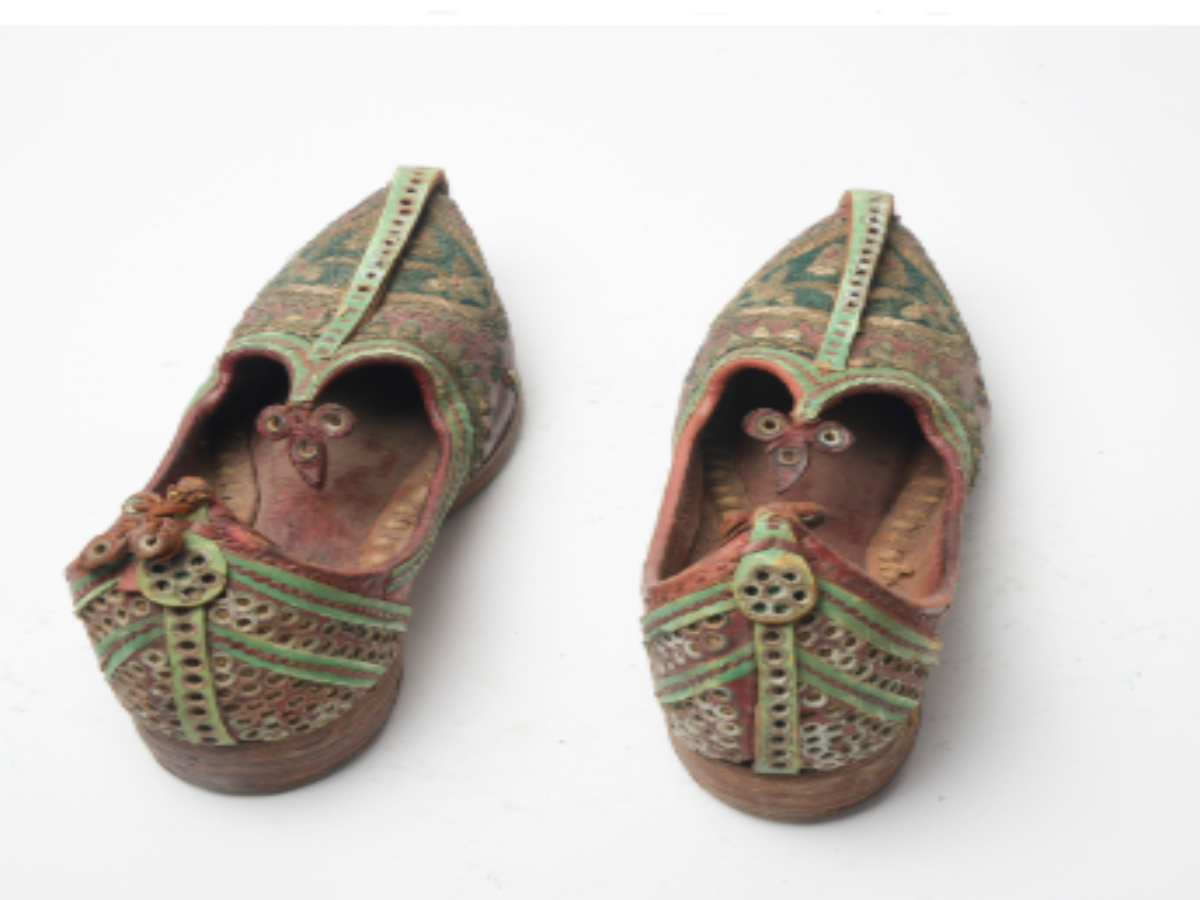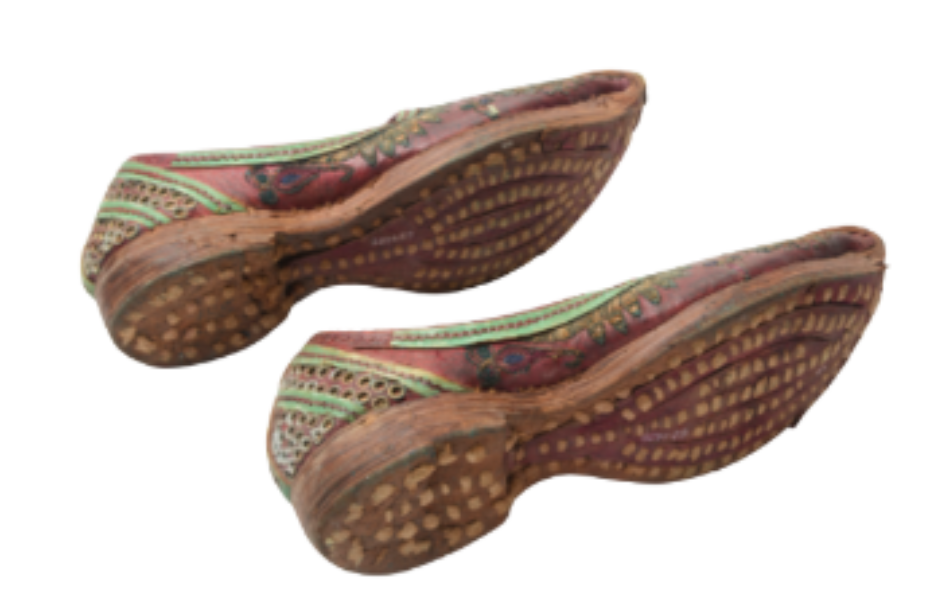State
Tribe Name
Art Type
short description
The Juti, also called Mojari, is an age-old handcrafted leather foot covering which is worn besides other communities by jats of India. These embroidered leather jutis are housed in the National Museum, New Delhi, where they show the artistic craftsmanship of the Jat community, especially those from Rajasthan, Punjab, and Haryana.
Thumbnail

Filter Postion
Right
Filter Background
Off
Theme
Filter Header Image

content
Image

description
The Juti, also called Mojari, is an age-old handcrafted leather foot covering which is worn besides other communities by jats of India. These embroidered leather jutis are housed in the National Museum, New Delhi, where they show the artistic craftsmanship of the Jat community, especially those from Rajasthan, Punjab, and Haryana.
Jutis are very thick leather, generally camel hide leatherworks, besides with glittering embroidery, mirror works, and precious metal thread or zari works. The motifs primarily are floral and geometric, slowly showing the rich heritage of the Jat tribe. Unlike modern designs, the traditional juti does not distinguish between the left or the right foot and becomes an extension in course of time to fit comfortably.
Jutis are very thick leather, generally camel hide leatherworks, besides with glittering embroidery, mirror works, and precious metal thread or zari works. The motifs primarily are floral and geometric, slowly showing the rich heritage of the Jat tribe. Unlike modern designs, the traditional juti does not distinguish between the left or the right foot and becomes an extension in course of time to fit comfortably.
Image Mode
landscape
Image

description
Historically, it was not merely a footwear category but a marker of status and somewhat cultural identity. The embellishments and motifs found on juti generally indicated the ancestry, marital status, or place of origin of the wearer and were worn during special occasions, such as weddings, festivals, and religious events.
Artisanal handcrafted leather jutis, meanwhile, have remained timeless with the artisans combining traditional crafts with contemporary fashion trends.. This craft has been promoted and preserved in all major museums and cultural exhibitions.
Artisanal handcrafted leather jutis, meanwhile, have remained timeless with the artisans combining traditional crafts with contemporary fashion trends.. This craft has been promoted and preserved in all major museums and cultural exhibitions.
Image Mode
landscape
promoted
Off
Verified
Off
